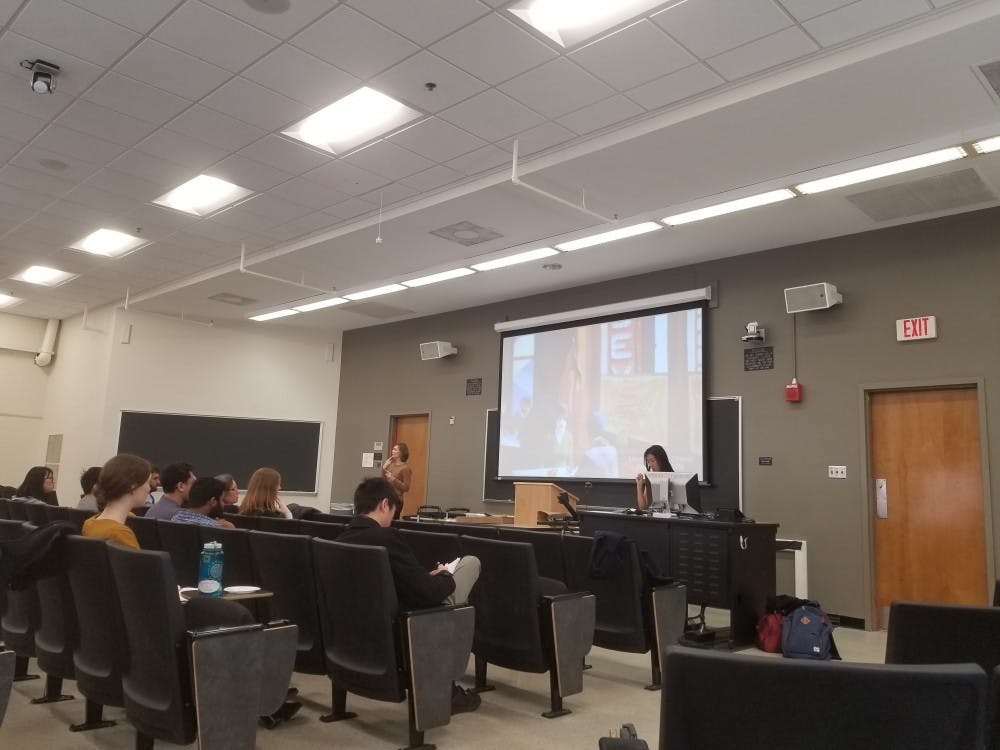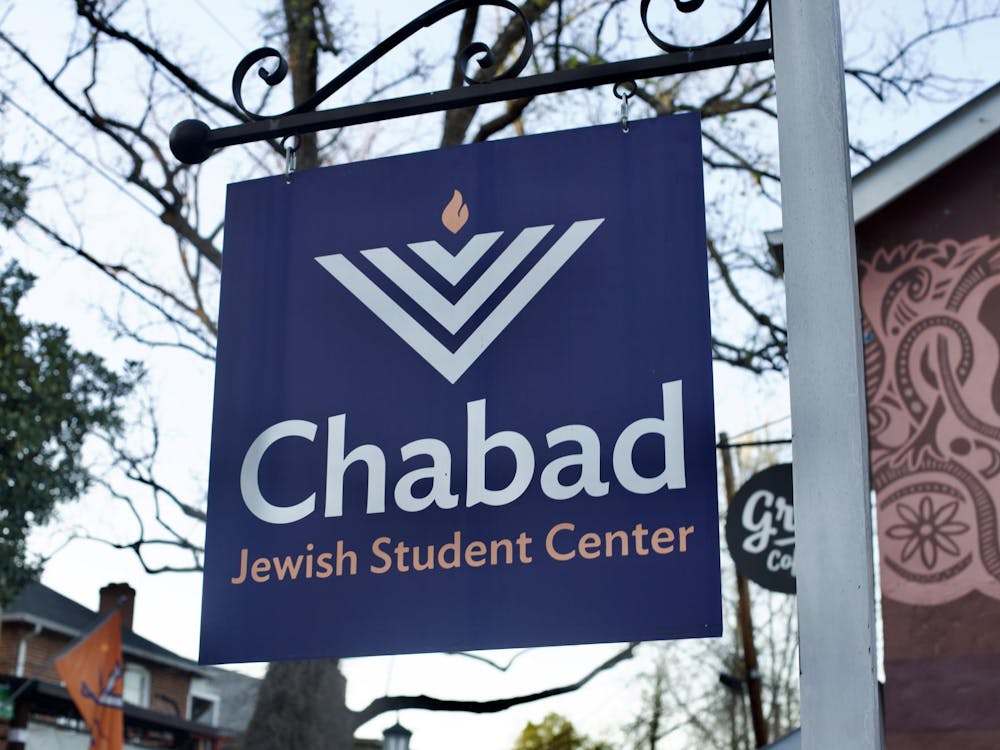The University’s American Studies program hosted Heather Lee, asst. prof. of history at NYU Shanghai, Friday afternoon for a discussion on Chinese restaurants and the role of Chinese-Americans in the development of the modern American culinary industry. The event, co-sponsored by the Institute of the Humanities and Global Cultures’ Asian Cosmopolitanisms Lab, took place in Wilson Hall and was open to the public.
The talk was one of two food culture-related events offered by the American Studies program this month, the first being a lecture on eugenics and animal husbandry in the early 20th century U.S. given by Prof. Gabriel Rosenberg, assistant professor of gender, sexuality and feminist studies at Duke University, on Wednesday, March 20. Another similar event, to be held Thursday, March 28 and hosted by the IHGC, will involve a lecture by Malaysian anthropologist Aihwa Ong, whose research deals heavily with Asian DNA extraction and issues surrounding the notion of flexible citizenship.
Sylvia Chong, assoc. prof. of English, director of the American Studies program and director of the minor program in Asian Pacific American Studies, introduced the event and described the lecture as an important contribution to the ongoing debates in the U.S. and elsewhere over immigration and the concept of citizenship.
“I know that we are in an era in which we are thinking a lot about the status of migrant labor, of both documented and undocumented workers,” Chong said. “And this talk and Heather’s research in general I think will uncover the important role that Asian-American labor has played in these debates and also perhaps uncover the hidden histories behind an industry that I’m sure we all partake in.”
In the opening to her talk, Lee emphasized just how ubiquitous Chinese restaurants are in the American cultural landscape — there are more Chinese restaurants in the U.S than the total number of McDonald’s, Burger Kings and other fast food chains — as well as soliciting audience members for examples of just what makes Chinese food so appealing to American consumers.
“Most things that people point to, it’s delicious, it’s cheap,” Lee said. “Chinese workers or immigrants often times don’t have many options, so they open up small businesses, and then so it also combines minimal skills and minimal investment in order to create sort of a really important interface between immigrants and the American population.”
However, Lee continued the discussion maintaining that this is not the whole picture.
“These were all important parts of the story, but ultimately not the part that sort of sparked the emergence of Chinese restaurants as an institution in the United States,” Lee said.
Lee talked about the emergence of Chinese restaurants as well as the rise in anti-Chinese sentiment that arose in the United States following the Panic of 1873, in which mass unemployment, especially in California, caused frustrated wage workers to increasingly blame Chinese immigrants for the existing economic turmoil. Large numbers of Chinese laborers had came to the U.S for better opportunities in the preceding decades, where many found work on the railroads then being built in the American West.
“[Protestors] set fire to Chinatowns, clubbed people to death, destroyed a lot of property, so this...is the product of what’s often thought of as the Anti-Chinese Movement, was this … national protest against depressed wages that took on a particularly racialized tone against one specific population,” Lee said.
Over time, as this attitude began to spread nationally, official government regulations were put in place in 1882 that explicitly banned all Chinese immigration to the U.S., known as the Chinese Exclusion Act — these restrictions lasted over 60 years, until their repeal in 1943.
As Lee described, this atmosphere of political disenfranchisement also affected many Chinese-Americans in the east, where a large number put down new roots in major modernizing cities such as New York and Chicago. As Chinese immigrants were barred from citizenship, some attempted to influence the system through other less-than legal means, including bribing public officials with grand “Chinese banquets” that served as the origin of today’s common Chinese restaurants in the U.S.
“And what the Chinese leaders did was that they threw these huge formal parties called Chinese banquets, and this is the birth of the Chinese restaurant industry in the United States,” Lee said. “You had these big elaborate dinners, you would eat things like bird’s eye soup … but there’s a lot of these very exotic symbolic foods that would be part of these banquets. There were big shows, they were lavish, lots of alcohol, there was live entertainment for them.”
Newspapers, the dominant media source of the late 19th century and early 20th century, also played a key role in propagating and enriching the American public’s knowledge of Chinese cuisine.
“You would … counter anti-Chinese myths that they ate rats and dogs,” Lee said. “Articles would describe how you would eat with chopsticks, so it was like this very sort of like early version of gastronomical tourism, where they introduce you to something very exotic and different to an audience that may or may not have an experience with them.”
Not only did the Chinese restaurant phenomenon provide wealth to immigrant owners, but a number of successful restaurateurs also used their economic influence and newfound knowledge of American life to modernize life back in China.
In closing, Lee noted that in the context of American history, Chinese restaurants offered cross-ethnic interaction that continues to exert a positive influence on American culture — and culinary tastes — today.
“I want you to think about immigrant spaces like restaurants as important sites of negotiation between people who rarely interacted,” Lee said. “American culture as a result was produced partially in these kind of spaces, in between, not by the grand institutions of museums only, but also on the street between people who were trying to find a common ground and a common understanding.”
The general responses from attendees at the event were also positive. Graduate Arts & Sciences student Nicole Story, whose research focuses on Asian-American studies, thought Professor Lee’s talk was helpful in expanding her existing knowledge on the topic matter.
“Prior to the event, I was somewhat familiar with the history of Chinese restaurants,” Story said. “I think many have this perspective that these immigrants were merely helpless or exploited in this period, and the talk revealed that these restaurants offered Chinese people a lot more agency. It was interesting to learn that Chinese restaurants were seen as an interracial, mixed gender space of cultural and financial interaction.”







